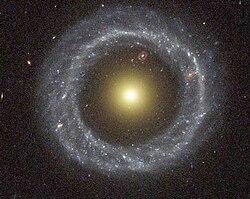
Sınaq göstərişi ölçüsü: 612 × 599 piksel. Digər ölçülər: 245 × 240 piksel | 490 × 480 piksel | 785 × 768 piksel | 1.046 × 1.024 piksel | 1.521 × 1.489 piksel.
Faylın orijinalı (1.521 × 1.489 piksel, fayl həcmi: 934 KB, MIME növü: image/jpeg)
Faylın tarixçəsi
Faylın əvvəlki versiyasını görmək üçün gün/tarix bölməsindəki tarixlərə klikləyin.
| Tarix/Vaxt | Miniatür | Ölçülər | İstifadəçi | Şərh | |
|---|---|---|---|---|---|
| hal-hazırkı | 17:22, 18 aprel 2019 |  | 1.521 × 1.489 (934 KB) | FriedrichKieferer | Better quality. |
| 13:17, 2 yanvar 2007 |  | 1.521 × 1.489 (401 KB) | Kalki | ||
| 19:37, 3 mart 2006 |  | 350 × 343 (9 KB) | Centaurus~commonswiki | Category:Galaxies |
Faylın istifadəsi
Aşağıdakı səhifə bu faylı istifadə edir:
Faylın qlobal istifadəsi
Bu fayl aşağıdakı vikilərdə istifadə olunur:
- af.wikipedia.org layihəsində istifadəsi
- ar.wikipedia.org layihəsində istifadəsi
- arz.wikipedia.org layihəsində istifadəsi
- LEDA 41149 (مجره)
- LEDA 2052159 (مجره)
- LEDA 83319 (مجره)
- LEDA 41917 (مجره)
- ESO 499 37 (مجره)
- SDSS J084337.97+402547.1 (مجره)
- UGC 4527 (مجره)
- UGC 8839 (مجره)
- ان جى سى 4369 (مجره)
- ان جى سى 7456 (مجره)
- ان جى سى 4366 (مجره)
- NGC 4636 (مجره)
- NGC 3423 (مجره)
- NGC 3666 (مجره)
- IC 3530 (مجره)
- IC 3328 (مجره)
- IC 2004 (مجره)
- IC 1218 (مجره)
- NGC 4336 (مجره)
- NGC 4459 (مجره)
- NGC 4464 (مجره)
- NGC 4544 (مجره)
- ان جى سى 4654 (مجره)
- NGC 4700 (مجره)
- NGC 4941 (مجره)
- NGC 4984 (مجره)
- NGC 5103 (مجره)
- NGC 7250 (مجره)
- NGC 7361 (مجره)
- NGC 3443 (مجره)
- NGC 3447 (مجره)
- NGC 3457 (مجره)
- NGC 3757 (مجره)
- NGC 3955 (مجره)
- ان جى سى 4203 (مجره)
- UGC 191 (مجره)
- AGC 233681 (مجره)
- SDSS J122928.18+203348.7 (مجره)
- UGC 5459 (مجره)
- UGC 12340 (مجره)
- SDSS J112152.80+032421.2 (مجره)
- LEDA 1230703 (مجره)
Bu faylın qlobal istifadəsinə baxın.
